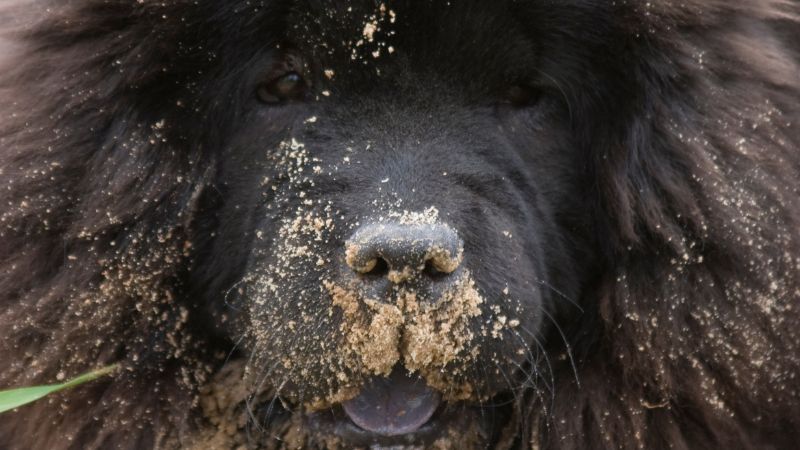Expressing a dog’s glands is a routine part of grooming for many dog breeds. It might sound daunting or even a bit icky, but it’s an essential task for maintaining your dog’s health and comfort. In this comprehensive guide, we’re going to dive into the how-to’s of external dog gland expression through a step-by-step method. So, roll up your sleeves, and let’s get into it!
Dogs have two small glands located on either side of their anus, known as anal glands or anal sacs. These glands produce a smelly secretion that dogs use to mark their territory. Sometimes, these glands don’t empty properly during defecation and can become impacted or infected, leading to discomfort, swelling, and even severe health issues.
Key Takeaways
- Not All Dogs Need It: Understand if your dog actually needs regular gland expressions. Overdoing it can cause more harm than good.
- Technique is Key: Learn the proper technique. Incorrect expression can lead to discomfort, infection, or even gland damage.
- Stop if There’s Resistance: If your dog shows discomfort or if you’re unable to express the glands easily, stop and seek professional help.
- Monitor Fluid: The appearance of the fluid can indicate health issues. Normal secretion is thin and brown, while anything thick, chalky, or bloody needs a vet’s attention.
- Regular Vet Visits: Even if you’re doing home expressions, regular check-ups can catch issues early and ensure overall gland health.
- Diet and Exercise Matter: A high-fiber diet and regular exercise can help naturally express the anal glands during regular bowel movements.
- Seek Professional Help When Needed: If you’re uncomfortable or unsure, have the expression done by a professional groomer or vet.
- Watch for After-Effects: Post-expression, monitor your dog for signs of discomfort or irritation in the anal area.
- Education is Ongoing: Keep learning about your dog’s health needs, as they can change over time or with the dog’s age and health condition.
- Patience and Care: Approach the task with patience and gentle handling to ensure a stress-free experience for your dog.
Spotting the Signs
| Sign to Spot | Description | Action to Take |
|---|---|---|
| Scooting | Your dog drags its rear on the ground. This is often due to irritation or discomfort in the anal area. | Observe and consider if it’s a recurring issue. Express glands or consult a vet. |
| Licking or Biting | Excessive attention to the anal area by licking or biting. Indicates discomfort or irritation. | Monitor the frequency and intensity. If persistent, check glands or see a vet. |
| Fishy Odor | A distinct, strong fishy smell emanating from your dog’s rear. This is due to the secretion from the glands. | Clean the area and express the glands if needed. Persistent smell warrants a vet visit. |
| Visible Swelling | Noticeable swelling or lumps near the rectum area, indicating potential blockage or infection. | Do not attempt to express; consult a vet immediately for examination. |
Preparing for the Task
Expressing your dog’s anal glands isn’t the most glamorous job, but with preparation, you can make it as quick and clean as possible. You’ll need disposable gloves, paper towels, a warm, damp cloth, and, most importantly, a calm and reassuring attitude. Make sure to perform this task in an easy-to-clean area as the fluid can smell quite potent.
5-Step Guide
Expressing your dog’s anal glands may seem daunting, but with patience and care, you can learn to do it safely and effectively. Here’s a detailed step-by-step guide:
1. Preparation:

-
- Gather Your Supplies: You will need disposable gloves, paper towels or wipes, a warm damp cloth, and a comfortable, well-lit area to work in.
- Settle Your Dog: Ensure your dog is calm and comfortable. Small dogs can be placed on your lap or a table, whereas larger dogs may be more comfortable on the floor. Use soothing tones and offer treats to keep them calm.
2. Positioning:
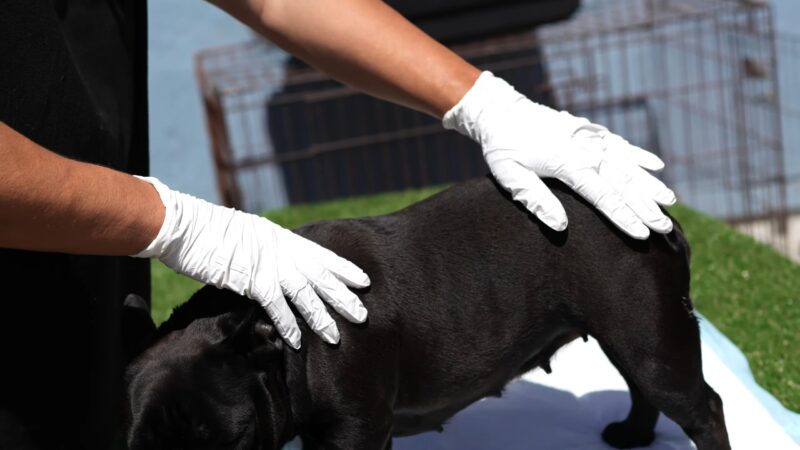
-
- Secure Your Dog: Have someone help hold your dog if they’re squirmy or you’re unsure. Lift the tail gently to expose the anus.
- Locate the Glands: Feel for the small, pea-sized glands located at the 4 and 8 o’clock positions around the anus.
3. Expression:
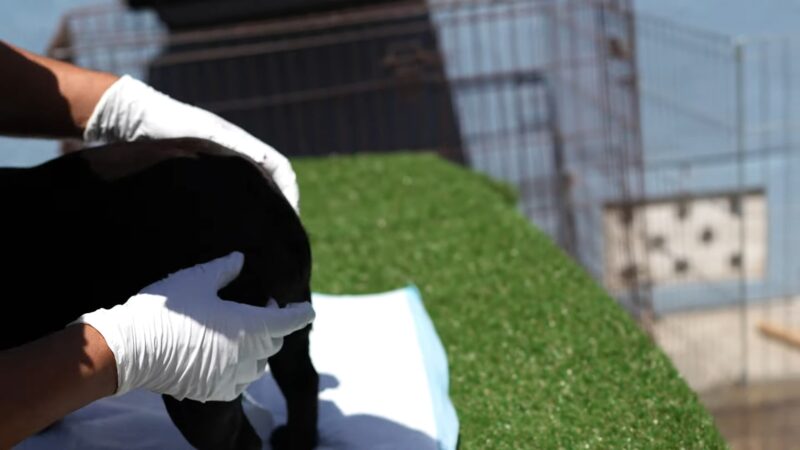
-
- Apply Pressure: With your thumb and forefinger, apply gentle pressure to the glands. You should press inward and slightly upward, aiming towards the center of the anus.
- Observe the Fluid: As you press, you’ll see a small amount of fluid exit the anus. It should be thin and brown. If it’s thick, bloody, or doesn’t come out at all, stop and consult your vet.
4. Cleaning Up:
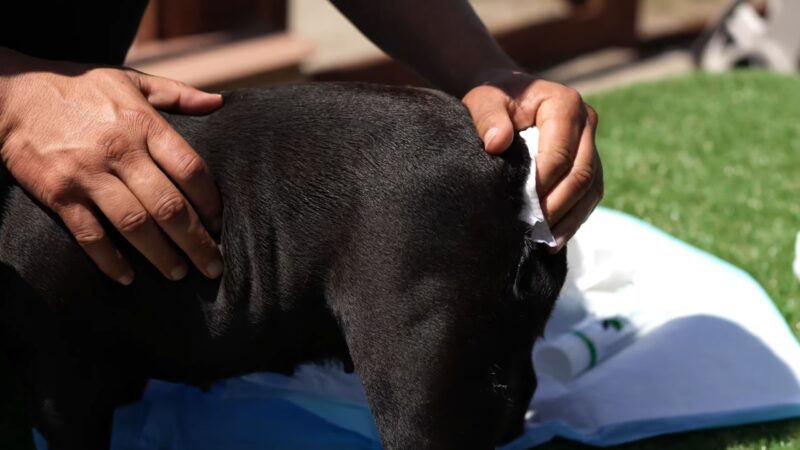
-
- Wipe the Area: Immediately clean up any expressed fluid with the paper towels. This fluid can be smelly and sticky, so be thorough.
- Clean Your Dog: Use a warm, damp cloth to clean around the anal area gently. Ensure all residue is removed to prevent irritation.
5. Post-Expression Care:
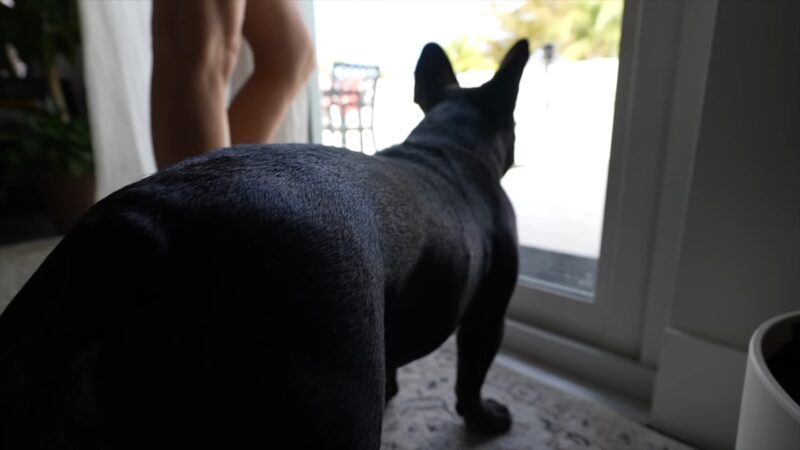
-
- Monitor Your Dog: After expressing the glands, monitor your dog for any signs of discomfort or irritation. They might scoot a bit immediately afterward, but this should quickly subside.
- Treat and Praise: Reward your dog with a treat and plenty of praise. This can help them associate the experience positively for future sessions.
- Regular Checks: Regularly check the glands, especially if your dog has had issues in the past. However, avoid over-expressing as it can lead to irritation and discomfort.
Remember, if at any point during the process you feel uncomfortable or if your dog seems in distress, it’s best to stop and consult with a professional. A veterinarian or an experienced groomer can provide guidance and demonstrate the technique for you. With practice and patience, expressing your dog’s anal glands can become a routine part of their health and wellness care.
When to See a Vet
While expressing your dog’s glands is typically straightforward, sometimes complications arise. If you’re unable to express the glands, if the fluid is bloody or very thick, or if your dog shows signs of pain or distress, stop immediately and consult your veterinarian. It’s also advisable to have the glands initially expressed by a professional to understand the proper technique and pressure required.
Vet’s Advice
When it comes to your pet’s health, particularly something as sensitive as anal gland expression, it’s invaluable to heed advice from the experts. Here are some words of wisdom straight from the veterinarian’s office to ensure you’re providing the best care for your furry friend.
Necessity:
Not all dogs require regular gland expressions. Many dogs naturally express their glands when they defecate. Understanding whether your dog needs regular expressions is crucial. Overdoing it can lead to irritation and discomfort.
Technique Matters:
Proper technique is vital. Incorrect expression can cause bruising, infections, or even rupture of the glands. If you’re unsure about the technique, have a professional demonstrate it for you first. Remember, it’s not just about squeezing; it’s about applying the right amount of pressure in the correct direction.
Know When to Stop:
If you encounter resistance, or if your dog is in pain, stop immediately. Aggressive or incorrect expression can cause significant discomfort and potentially lead to more severe complications.
Watch for Abnormalities:
Pay attention to the color and consistency of the secreted fluid. Normal gland fluid is generally thin and brown. Thick, chalky, or bloody fluid can indicate an infection or impaction. If you notice anything unusual, it’s time for a vet visit.
Regular Check-Ups:
Even if you’re expressing the glands at home, regular check-ups with the vet are crucial. They can catch signs of potential issues early and provide professional cleaning or expression as needed.
Diet and Exercise:
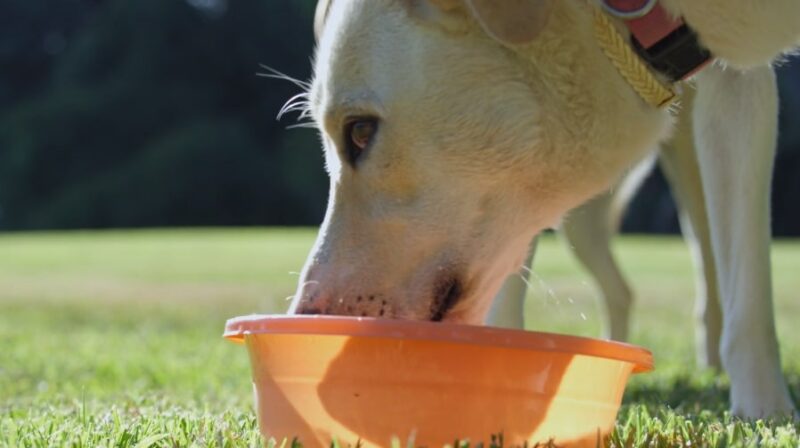
A high-fiber diet and regular exercise can help your dog maintain regular bowel movements, which in turn can help naturally express the anal glands. Consult with your vet for the best diet and exercise routine for your dog’s specific needs.
Professional Training:
If you’re not comfortable performing the expression yourself, or if your dog is particularly squirmy, consider having it done professionally. Groomers and vets are trained in this task and can perform it quickly and with minimal discomfort to your dog.
Maintaining Gland Health
Prevention is always better than cure. Regular exercise, a high-fiber diet, and ensuring your dog is at a healthy weight can help the glands express naturally. Regular grooming and vet check-ups can also catch any glandular issues before they become a problem.
FAQs
How often should a dog’s anal glands be expressed?
The frequency varies between dogs. Some may need it monthly, while others rarely or never need it. Dogs that have a history of gland issues might require more frequent expressions. It’s best to observe your dog and consult with your vet for a tailored schedule.
Can diet affect my dog’s anal gland health?
Yes, diet plays a significant role. A high-fiber diet can help create bulkier stools, which can naturally help express the glands during defecation. Speak to your vet about the best diet for your dog’s digestive health and gland function.
Are certain breeds more prone to needing gland expression?
Yes, some small breeds like Chihuahuas, Toy Poodles, and Basset Hounds, among others, are more prone to anal gland issues. However, any dog can have problems, so it’s good to be aware regardless of breed.
Can anal gland issues lead to other health problems?
If left untreated, impacted glands can become infected or abscessed, leading to severe pain and potential systemic infections. Regular check-ups can prevent most serious complications.
Is expressing the glands painful for the dog?
If done correctly, it should not be painful, though it might be momentarily uncomfortable for the dog. If your dog shows signs of pain, stop immediately and consult a vet, as this could indicate an infection or other issue.
What should I do if I notice blood or an unusually foul odor during expression?
Blood or a significantly bad odor can indicate infection or impaction. Stop the expression and clean the area gently. It’s important to consult your veterinarian as soon as possible for an examination and appropriate treatment.
A Final Word
Expressing your dog’s glands might never become your favorite pet care task, but understanding its importance and mastering the technique can significantly impact your dog’s comfort and health.
Always approach this task with patience and care, and when in doubt, seek professional help. Your furry friend might not thank you verbally, but their relieved wagging tail will be thanks enough!

